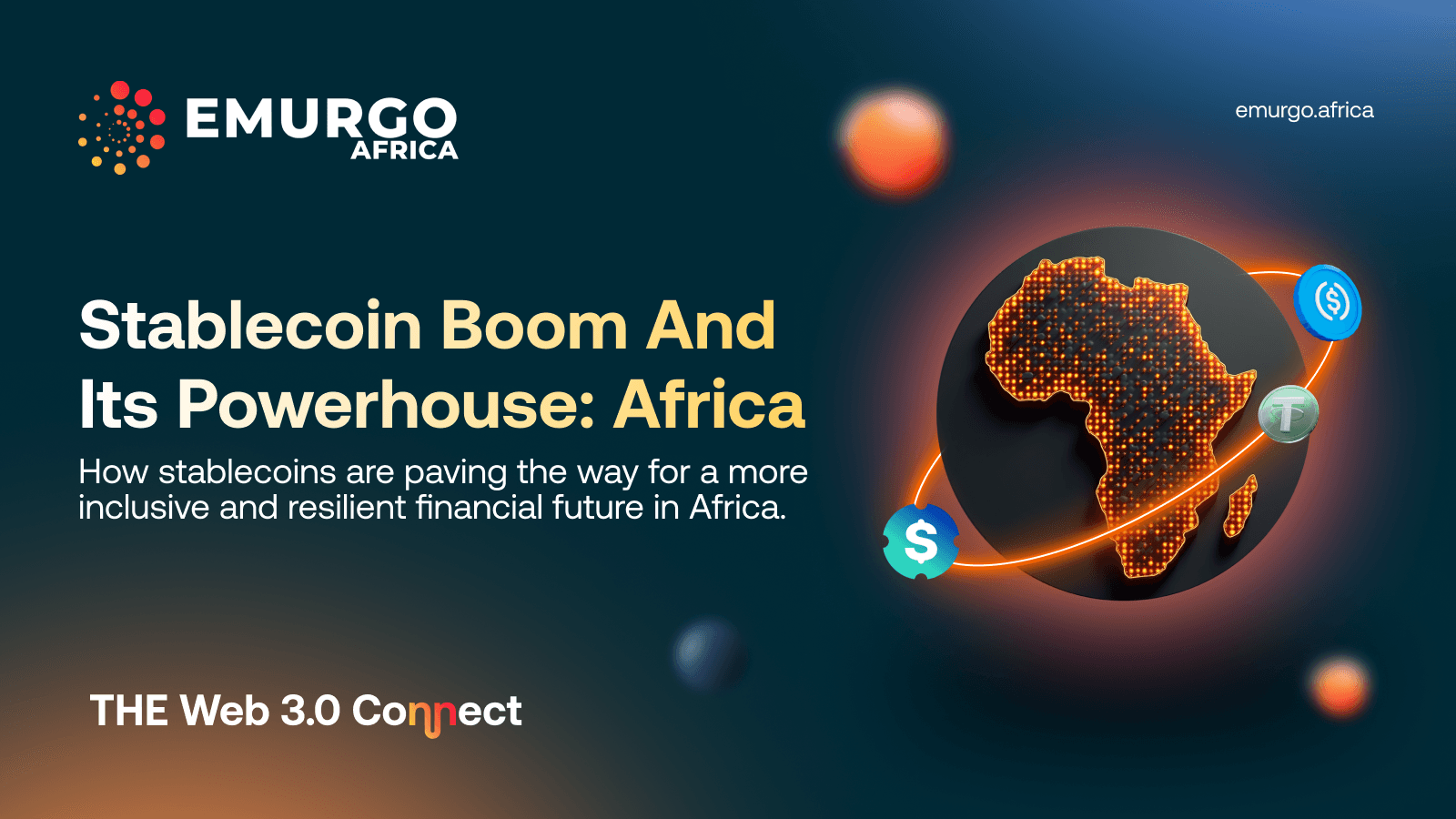You can also read the related posts:
State of Crypto Adoption in Africa 2023
Blockchain Projects & Venture Funding in Africa 2023
RealFi - the fusion of traditional finance and DeFi
Hope you enjoy them as well!
Today, we overview the socio-economic situation in Africa!
💡
To summarize, the size of the economy of Africa itself is still much smaller than that of developed countries. However, although there are variations from country to country, the economy has been growing, and given the growing and young population, if we can successfully promote the development and accumulation of human resources, the creation of new industry, and structural transformation, Africa has great potential to grow its economy and enrich people's lives in near future.
You can read below according to your interests for more detailed information and data.
Table of Contents:
- Growth of Economy
- Purchasing Power
- Demographic Change
- Structural Transformation
- Human Resource
- The Data Set
1. Growth of Economy
Figure 1 shows the GDP (constant 2015 US$, billion) in 1990, 2005, 2020 and % growth of GDP (1990-2020) by country. The volume of GDP is still much smaller in African countries than developed countries throughout 1990-2020. Among the countries listed, China shows the highest GDP growth rate, 1,320%, from 1990 to 2020 followed by Ethiopia, 620% growth of GDP. Other African countries also show the high GDP growth rates: Ghana has 380% growth; Egypt 260%; Nigeria 230%; Kenya 180%.

Data Source: World Development Indicators. World Bank Database, custom data acquired via website. Available from https://databank.worldbank.org/source/world-development-indicators/ (accessed 19 October 2022).
Figure 2 shows the GDP per capita (constant 2015 US$) in 1990, 2005, 2020 and % growth of GDP per capita (1990-2020) by country. In 2020, South Africa has the GDP per capita, $5,660, which is about 10th of GDP per capita in USA, $58,060. Among the countries listed, China shows the highest growth rate of GDP per capita, 1,050%, followed by India, 240%, and South Korea, 240%. Ethiopia, Ghana, Egypt, and Nigeria also show the high growth rates, 200%, 130%, 100%, and 50% respectively.

Data Source: World Development Indicators. World Bank Database, custom data acquired via website. Available from https://databank.worldbank.org/source/world-development-indicators/ (accessed 19 October 2022).
2. Purchasing Power
Figure 3 shows the annual income (constant 2015 US$) and average GNI per capita (constant 2015 US$) by country. The blue line shows the 10-90 percentile annual income range, and the pink or blue bar shows the 30-70 percentile income range (we call this as a relative "middle class"). Among the countries listed, the middle class in Africa has the annual income range $500-$4,800. While South Africa has the highest average GNI per capita, it has a very skewed distribution of income within the country. China has the middle class income range from $5,500-$11,300. US, UK, Germany, France, Japan, and South Korea show the income range of the middle class, $20,000-$67,000.

Data Source: World Development Indicators. World Bank Database, custom data acquired via website. Available from https://databank.worldbank.org/source/world-development-indicators/ (accessed 19 October 2022).
Figure 4 shows the gross saving rate as % of GNI in 2020 by country. It shows that the saving rate ranges from 11% to 45%. And it is NOT dependent on the income level of a country.

Data Source: World Development Indicators. World Bank Database, custom data acquired via website. Available from https://databank.worldbank.org/source/world-development-indicators/ (accessed 19 October 2022).
3. Demographic Change
Figure 5 shows the change of share of world population by region from 2020 to 2080. By 2080, the share of world population in Sub-Saharan African countries (SSAs) increase from 14% to 29%, showing the highest growth among all regions. In 2080, SSAs will have the largest population share of the world.

Data Source: United Nations, Department of Economic and Social Affairs, Population Division (2022). Data Portal, custom data acquired via website. United Nations: New York. (accessed 18 October 2022).
Figure 6 shows the rank of country by population in 2080 and median age. In 2080, 9 among 20 most populated countries will be in Africa, among which Nigeria, DRC, Ethiopia, and Tanzania will be the 4 most populated countries in Africa with the population of 510 million, 360 million, 290 million, and 210 million respectively. Sub-Saharan countries (SSAs) will continue to be the youngest region in the world. The median age of SSAs in 2080 is 30.2 compared to 45.1 of the rest of the world.

Data Source: United Nations, Department of Economic and Social Affairs, Population Division (2022). Data Portal, custom data acquired via website. United Nations: New York. (accessed 18 October 2022).
4. Structural Transformation
Figure 7 shows the share of value added (% of GDP) by industry by country in 2000 and 2020. In Ethiopia and Ghana, share of value added in agriculture has rapidly decreased, from 45% to 36% and from 35% to 19% respectively between 2000 and 2020. Both countries achieved one of the highest GDP growth rate in last 20 years (refer Figure 1 above). While in Ethiopia the share of industry increased rapidly from 11% to 23%, in Ghana the share of service increased rapidly from 29% to 45%.

Data Source: World Development Indicators. World Bank Database, custom data acquired via website. Available from https://databank.worldbank.org/source/world-development-indicators/ (accessed 20 October 2022).
Figure 8 presents share of employment (% of total employment) by sector by country in 1994 and 2019. Workers have rapidly shifted from agriculture to service sector in last 25 years except Kenya. China shows the highest increase in the share of employment in service sector, 24% increase, followed by Ghana, 20%, Nigeria and South Africa, both 17%.

Data Source: World Development Indicators. World Bank Database, custom data acquired via website. Available from https://databank.worldbank.org/source/world-development-indicators/ (accessed 20 October 2022).
5. Human Resource
Figure 9 presents the post-secondary school enrollment rate (% of gross enrollment) in the selected countries. The enrollment rate of higher education in Africa is lower than that in other regions. Among African countries, Egypt and South Africa have relatively higher post-secondary school enrollment rate; 39% and 24% of students respectively are enrolled in the post-secondary school in the country.

Data Source: World Development Indicators. World Bank Database, custom data acquired via website. Available from https://databank.worldbank.org/source/world-development-indicators/ (accessed 20 October 2022).
Figure 10 shows the completion rate of lower secondary, upper secondary, and post-secondary school of selected countries. South Africa, Nigeria, and Egypt have higher secondary completion rate, 58%, 45%, and 40% respectively, than other African countries. While South Africa shows the highest lower secondary completion rate, 72%, China and Ghana also have high lower secondary completion rate, 65% and 54% respectively.

Data Source: World Development Indicators. World Bank Database, custom data acquired via website. Available from https://databank.worldbank.org/source/world-development-indicators/ (accessed 20 October 2022).
Figure 11 presents the unemployment rate by education level in 2005 and 2020 in African countries and developed countries. In African countries, unemployment rate of labor force with intermediate or advanced education are much higher than that in developed countries. Especially the employment rate of labor force with advanced education increased from 8.3% to 11.2% in last 15 years. There needs the industry to absorb those high potential workers.

Data Source: World Development Indicators. World Bank Database, custom data acquired via website. Available from https://databank.worldbank.org/source/world-development-indicators/ (accessed 20 October 2022).
6. The Data Set
The data source used in this report is as described in the caption of each figure. The figures are generated using this spreadsheet I made using data from the data source.
Follow EMURGO Africa for more information

EMURGO Africa invests and supports local Web3 projects in the region to adopt Cardano’s decentralized blockchain technology to build socially impactful solutions.
As a regional entity of EMURGO, the official commercial arm of Cardano, EMURGO Africa also runs a local Cardano accelerator in Africa, Adaverse, which accepts applications year-round.
For more up-to-date information on EMURGO Africa, follow the official channels listed below.
About EMURGO Africa
- Official Website: emurgo.africa
- Twitter: @EmurgoAfrica
- Telegram: https://t.me/emurgoafrica



